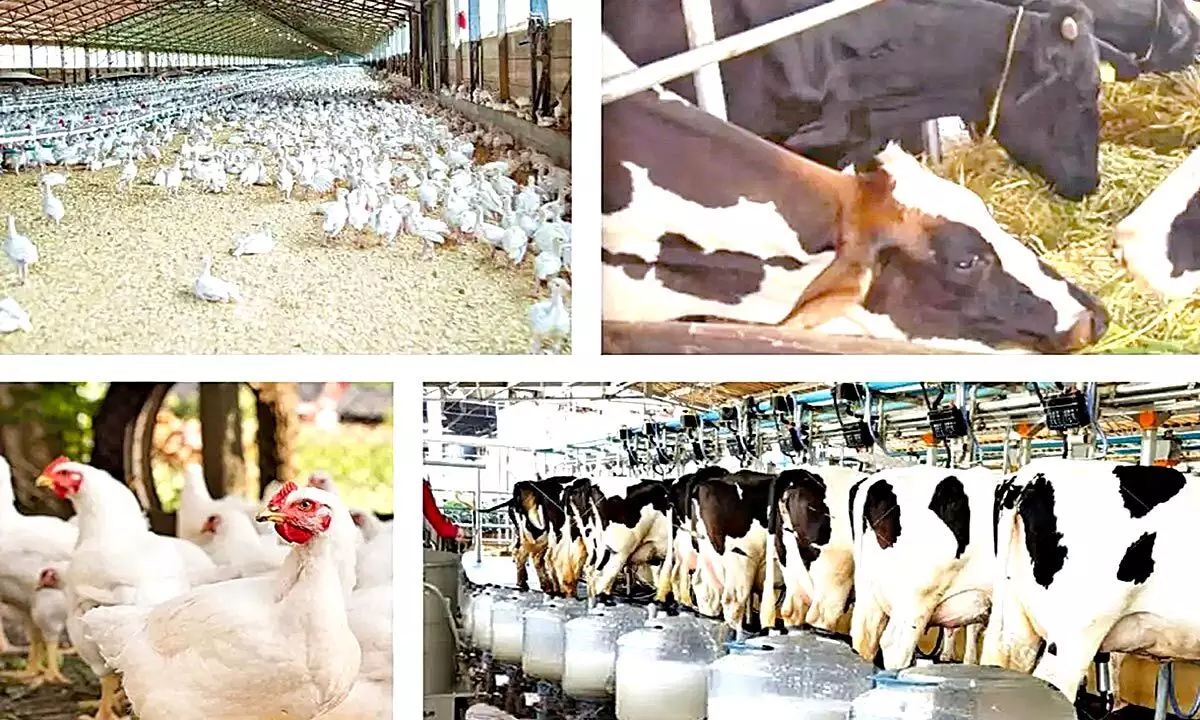Ex-MSMEs can access animal husbandry fund
As per the new rule, companies with investment of Rs50 cr and an annual turnover of over Rs250 cr would also be able to avail the credit guarantee benefit
image for illustrative purpose

New Delhi: The government has allowed former micro, small and medium enterprises (MSMEs) to avail of the credit guarantee benefit of the Animal Husbandry Infrastructure Development Fund (AHIDF).
Hitherto, credit guarantee under AHIDF was not available to non-MSMEs, even though the eligible entities could get interest subvention. Now, 25 per cent credit guarantee of the total borrowings will be provided to that eligible entity which was registered as an MSME at the time of application under the AHIDF even if the unit has moved up from the MSME status, official sources told Bizz Buzz.
According to the Ministry of MSMEs, micro enterprises are those which have investment in plant and machinery or equipment not more than Rs1 crore and annual turnover not more than Rs 5 crore. For small enterprises the corresponding sums are Rs10 crore and Rs50 crore, and for medium enterprises Rs 50 crore and Rs 250 crore.
Therefore, as per the new rule, the companies with investment of Rs50 crore and an annual turnover of over Rs250 crore would also be able to avail the credit guarantee benefit of the AHIDF.
The Ministry of Fisheries, Animal Husbandry & Dairying has informed the organizations concerned about the change, including scheduled banks, the National Bank for Agriculture and Rural Development (Nabard), all state animal husbandry departments, the Departments of Financial Services and Expenditure under the Ministry of Finance, and Small Industries Development Bank of India (Sidbi).
Prime Minister Narendra Modi announced the setting up of Rs 15,000-crore AHIDF under the Atma Nirbhar Bharat Abhiyan stimulus package in May 2020. The AHIDF was approved for incentivizing investments by individual entrepreneurs, private companies, MSMEs, farmers’ producers organizations or FPOs, and Section 8 companies to establish: the dairy processing and value addition infrastructure; meat processing and value addition infrastructure; and animal feed plants.
The objectives were to: help increase milk and meat processing capacity and product diversification, thereby providing greater access for unorganized rural milk and meat producers to the organized milk and meat markets; make available increased price realization for the producer; make available quality milk and meat products for the domestic consumer; and fulfill the goal of protein-enriched quality food requirement of the growing population of the country and prevent malnutrition in one of the highest malnourished children population in the world.
Other objectives were development of entrepreneurship, promotion of exports, and quality concentrated animal feed.

